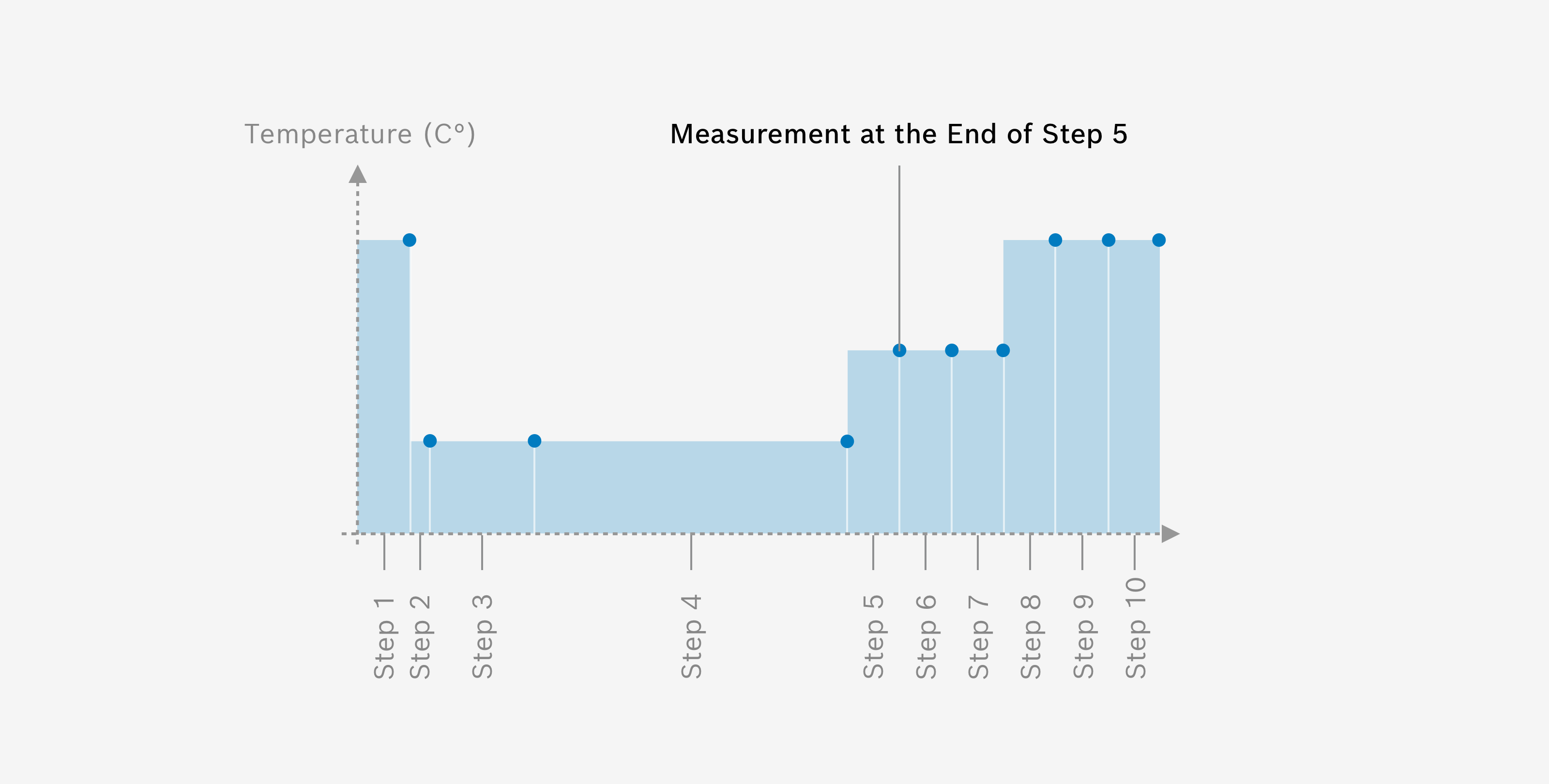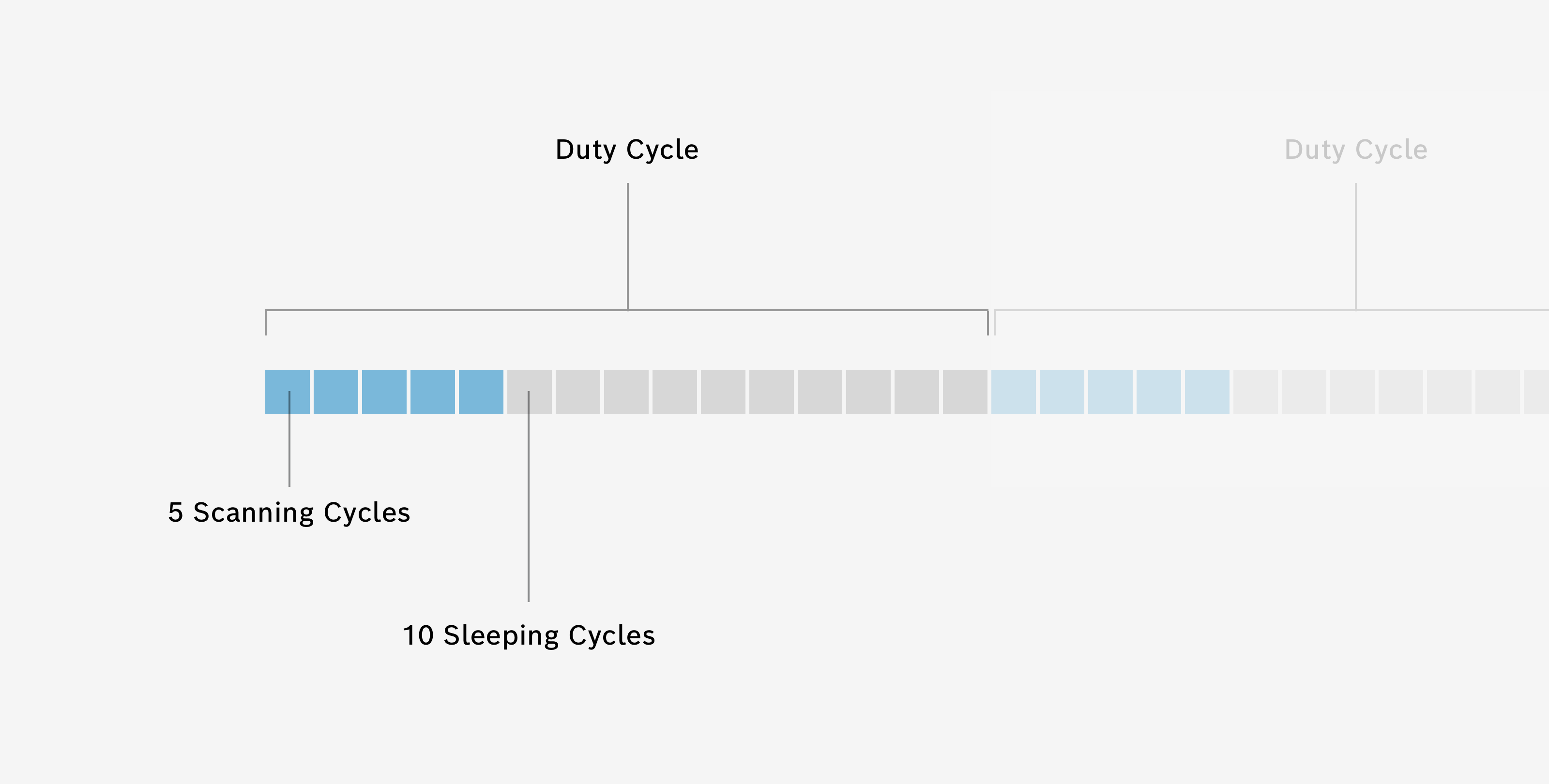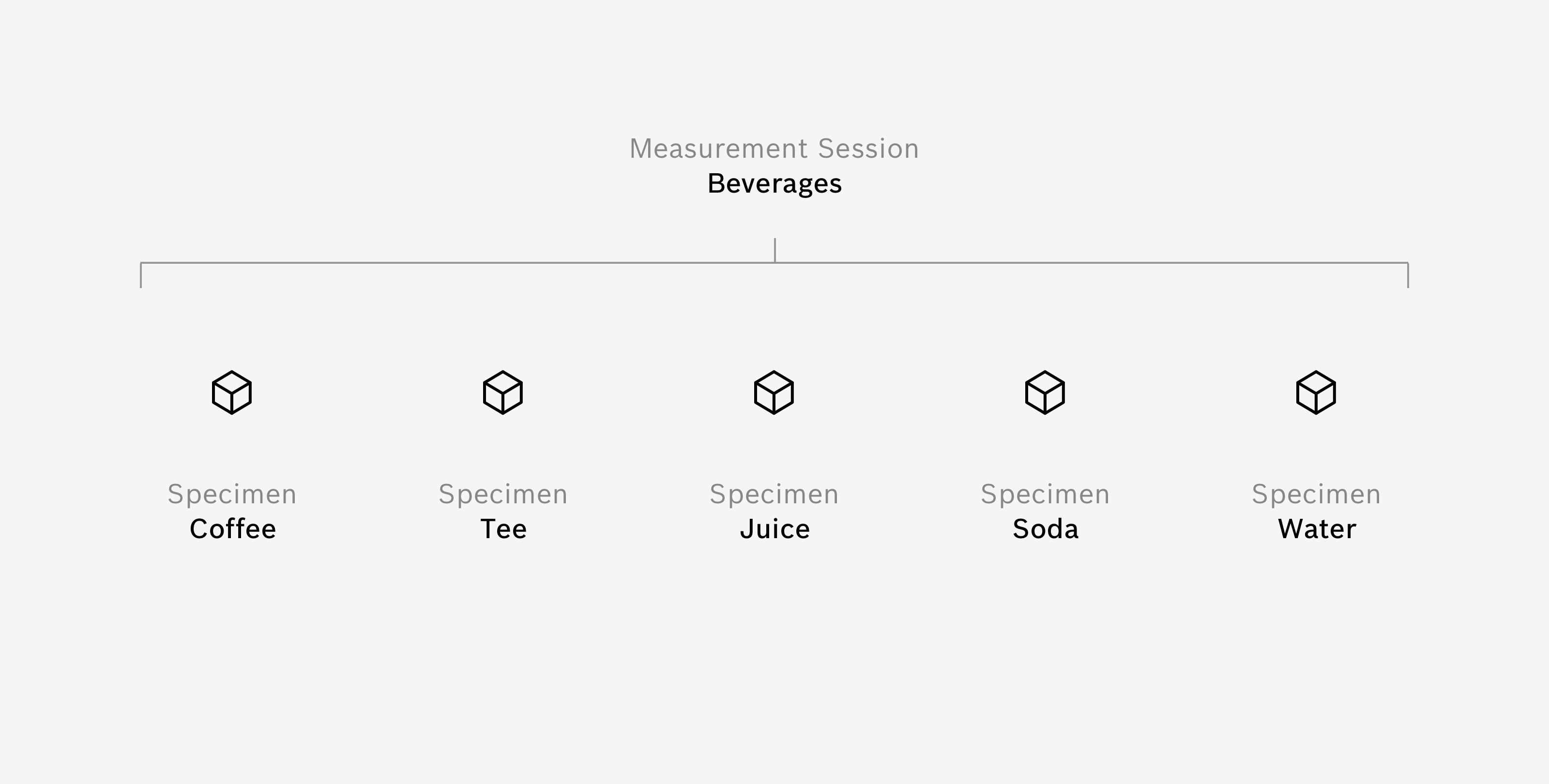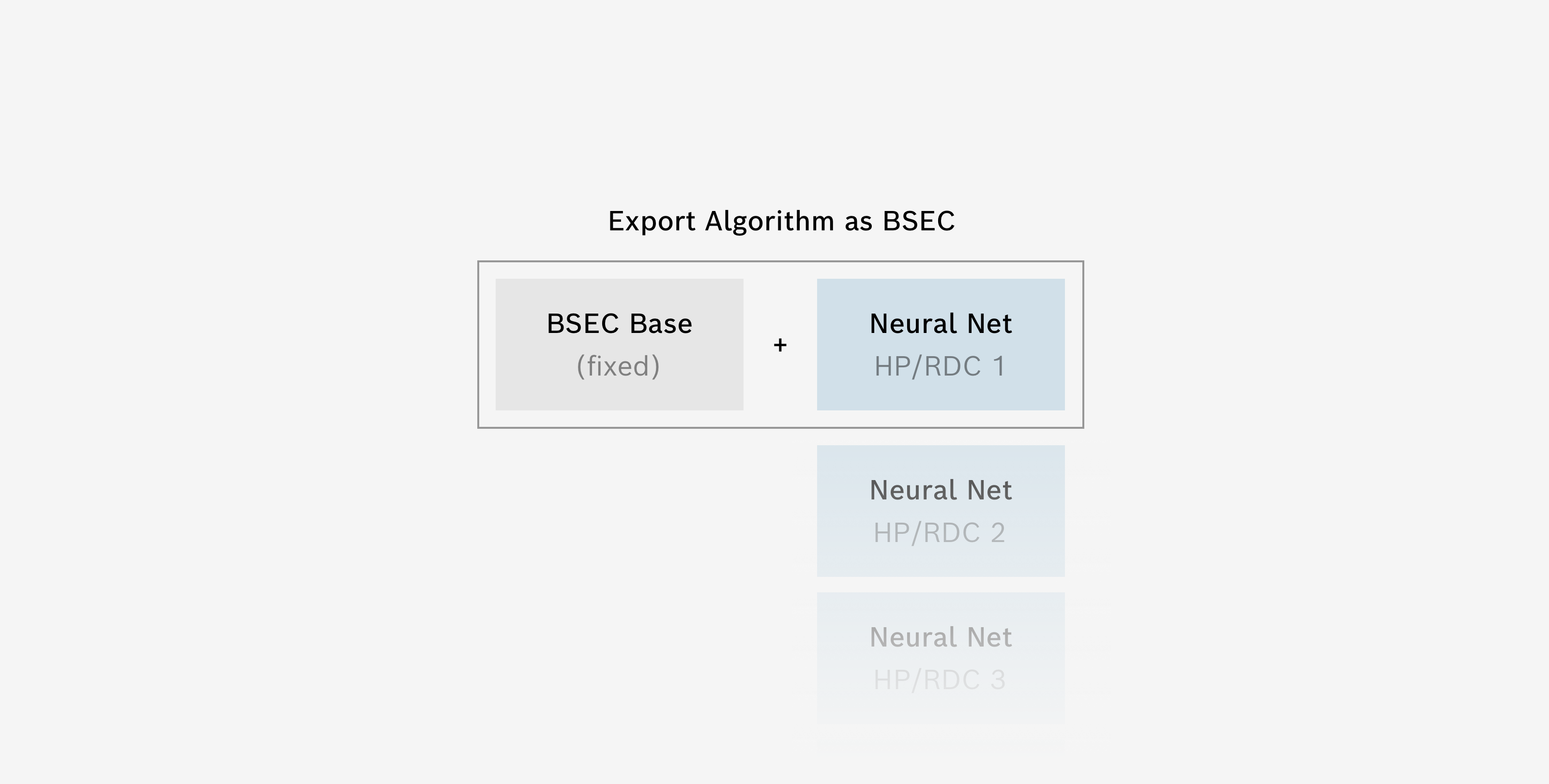Glossary
Sensor Board
BME688 Development Kit
The BME688 Development Kit features eight BME688 sensors. It consists of
- "BME688 dev-kit board" (ordering code 0330.EKB.016), which is an Adafruit feather compatible shield (see https://www.adafruit.com/feather)
- "Adafruit HUZZAH32" feather board with an ESP32 MCU (see https://www.adafruit.com/product/3591)
- MicroSD card for data storage
- CR1220 coin cell battery for the real-time clock
BME Board Configuration
The Board Configuration states which sensor runs which sensor mode.
HP/RDC Combination
Each sensor can operate with a specific setting which consists of
- Heater Profile (HP)
- Duty Cycle (RDC)
Hence, the term HP/RDC Combination.
Heater Profile
Temperature profile with 10 steps which is run through by the sensor during a Scanning Cycle. Each of the 10 steps consists of:
- A temperature
- A duration (timebase is 140 ms)
At the end of each step, a measurement is recorded and stored in the data.

Please note
The duration of a step of a Heater Profile is calculated with a timebase of 140 ms. That means e.g. a duration of 2 will result in a duration of 2 * 140 ms = 280 ms.
Duty Cycle
Repeated sequence of a defined number of Scanning Cycles followed by a defined number of Sleeping Cycles.
E.g. Duty Cycle with 5 Scanning Cycles and 10 Sleeping Cycles (RDC-5-10):

Each Scanning Cycle can be viewed as one iteration of a Heater Profile. Therefore the duration of each Scanning Cycle is derived from the duration of the Heater Profile used. The duration of each Sleeping Cycle is always equal to the duration of a Scanning Cycle.
The duration of the whole Duty Cycle defines the algorithms response time.
Sleeping Cycle
During a Sleeping Cycle the sensor is in sleep mode and does not perform any measurements.
Scanning Cycles
During a Scanning Cycle the sensor uses the internal micro-hotplate to run through a sequence of temperature steps according to a specific Heater Profile.
Measurement Session
Measurement Session
Data acquisition within one “session“ with one BME Board Configuration. The Measurement Session begins with powering on the board and ends with powering off the board. Multiple sessions can be conducted one after another using the same SD card. Typically, multiple Specimens are measured during a Measurement Session.

Specimen
One specific gas composition that the sensors on the BME Board are exposed to during measurement (e.g. an object, a specific situation, a smell, gas, etc.).
Session Raw Data / Raw Data
The raw data recorded during a Measurement Session which is saved to the SD card. This includes data from all 8 sensors on the BME688 Development Kit.
Session Raw Data is split into multiple files when board power is switched on/off or the file limit (297 MB) is exceeded.
Session Raw Data can be marked during measurement for easy splitting into Specimen Data by pressing one of the buttons S1 or S2 on the BME688 Development Kit.
Specimen Data
A part (a set of cycles that belong to one Specimen) of the Session Raw Data of one Measurement Session. The Specimen Data can be curated and labeled with respect to the measured Specimen within the application.
Specimen Data includes four data channels (for each sensor on the board):
Gas Data Channel (10 data points)Humidity Data Channel (1 data point)Temperature Data Channel (1 data point)Barometric Pressure Data Channel (1 data point)
Algorithm
Algorithm
An Algorithm is a systematic procedure that describes the sequence of actions needed to predict a certain quantity. In combination with the gas sensor and a micro controller it allows for gas sensor predictions.
An Algorithm requires training in order to effectively perform its intended tasks. Training involves feeding the Algorithm a certain amount of data so it can learn patterns, correlations, and relationships among the data, ultimately allowing it to make accurate predictions or decisions when presented with new, unseen data. This data is provided in the form of Specimens, which can be associated with the Algorithm.
HP/RDCs and Neural Nets
Depending on the Specimens you assigned to your Algorithm, zero, one or multiple HP/RDC Combinations are present in all Specimens. For every (common) combination an individual Neural Net is trained and evaluated. Therefore each Algorithm in your BME Project consists of:
- the Algorithm Settings
- the associated Specimens (and respective data)
- the trained Neural Nets (each one associated to one specific (common) HP/RDC combination)
- the performance metrics for each Neural Net
The Neural Nets are the core components of every Algorithm. You can export individual Neural Nets as a BSEC configuration, meaning the algorithm will then only work for the associated HP/RDC.

Training and Validation Data
The Specimen Data of an Algorithm is split into two parts:
- Training Data: Used to train the neural net
- Validation Data: Used to test the performance of the neural net after training
BSEC Configuration File
A configuration file that can be exported from the application for each neural net. It contains all parameters (weights and biases) of the trained neural net. It is meant to be used with the BSEC Software.